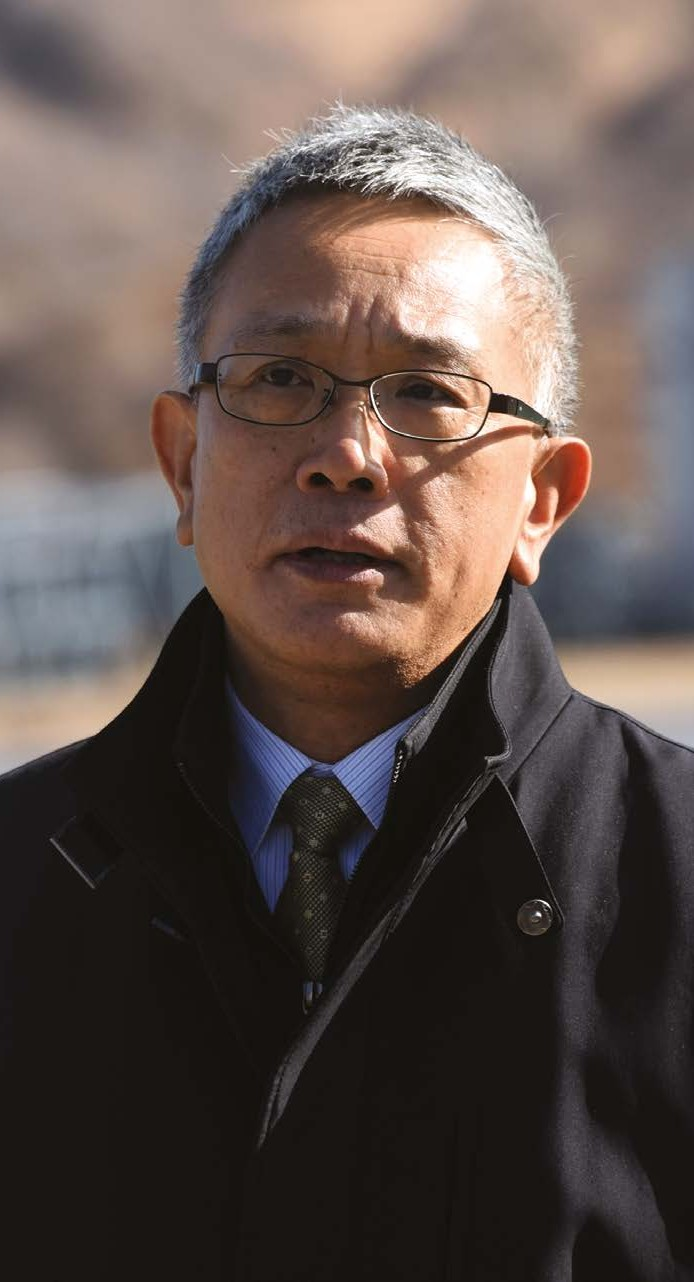 12/16/2021
12/16/2021

This engineer leads China’s first successful Mars mission, which reached the planet this year and landed a rover on its surface.
By Smriti Mallapaty
On 15 May, Zhang Rongqiao wiped tears from his eyes as China’s Mars rover landed safely on the planet’s sandy, auburn plains. “I was so overwhelmed,” says Zhang, who coordinated the mission.
The touchdown marked the conclusion of a 475-million-kilometre journey full of peril for Zhang and the China National Space Administration, which had never before sent a successful mission to Mars.
The landing, says Zhang, gave him a taste of the old Chinese saying — it takes ten years to sharpen a good sword. China is only the second nation, after the United States, to place a rover on Mars, which is notorious for crushing the hopes of space agencies; nearly half of all missions to the planet have ended in failure.
China’s team faced many unknowns in what Zhang calls “such a strange and complex environment”. As chief designer, he is responsible for coordinating a team of tens of thousands who built and operate the Mars mission, named Tianwen-1. The project consists of an orbiter, a lander and the rover, called Zhurong. “The buck stops with him,” says David Flannery, an astrobiologist at Queensland University of Technology in Brisbane, Australia.
The mission was one of three to arrive at Mars in 2021 — the others were NASA’s Perseverance rover and an orbiter delivered by the United Arab Emirates. The success of China’s mission has made a national hero
of Zhang, who has appeared numerous times on state media, but rarely talks to
the press outside China. He responded toNature’s questions by e-mail.
Science took a back seat to Tianwen-1’s primary goal, which was to develop and demonstrate China’s prowess in deep-space missions that travel beyond the Moon. But Zhang says that getting rich and high- quality information from Mars was a key consideration of the design. And researchers say that the data generated by the rover’s six scientific instruments, and another seven on the orbiter, will contribute to a better understanding of a previously unexplored patch of the planet.
Born in 1966 in the town of Anling, eastern China, Zhang studied engineering at Xidian University in Xi’an. He later completed a master’s degree at the Chinese Academy of Space Technology in Beijing, and has worked on Earth-observation satellites.
Lu Pan, a planetary scientist at the University of Copenhagen, says that Zhang probably played a key part in the CNSA’s decision to send an orbiter, lander and rover to Mars in one shipment — making China the first country to do so. Researchers also say that Zhang considered their input on the choice of instruments and landing site, which will help to ensure that the mission generates as much research as possible.
“He encouraged scientists to participate in the mission to get more scientific output,” says Wenzhe Fa, a planetary scientist at Peking University, Beijing, who is analysing radar data from the Mars mission.
Launched on 23 July 2020, Tianwen-1 arrived at the red planet in February, and dropped the lander and rover in May. The spacecraft settled on a vast impact crater named Utopia Planitia — selected mainly because it is flat and a relatively safe place to land. Since then, the rover has travelled more than 1,200 metres south, taking panoramic images as well as selfies that have been widely shared online.
In mid-September, Zhurong went into hibernation because the Sun got in the way of communications between Mars and the Earth, but it returned to work in late October. It is now heading towards a region that might once have been the coastline of an ancient ocean, where researchers will search for clues about the evolution of Mars.
The mission has produced limited science so far, but data collected by some instruments on the rover and orbiter have been shared with more than two dozen teams across the Chinese mainland, Hong Kong and Macau, says Fa, and results are seeping out. They expect to learn insights about the geology of the Utopia Planitia region and the fate of water on the planet.
For China’s deep-space missions to take a big leap scientifically, the country will need to refocus towards advancing research rather than chiefly demonstrating engineering. That switch has already happened with China’s lunar missions, says Pan. “These processes take time.”
The real research riches for China, says Flannery, will come later — with the next round of planetary missions. China plans to launch sample-return missions to the asteroid Kamo?oalewa in 2024, and to Mars before 2030. And it has its sights set on Jupiter, too.
Tianwen-1 has also given China’s nascent field of planetary science a boost, say researchers.
“A new generation of scientists is being created right now with this mission,” says Flannery.